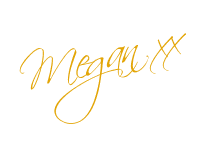The first time I looked through 'Drape Drape 3' by Hisako Sato on Christmas Day, this was the dress I wanted to make. However, I was rather daunted by the complexity of the pattern and the fact that my version of this book is in Japanese, which I do not understand.
I decided to attempt an
easier pattern from this book first to see how I went. I'd already made things from 'Drape Drape 1' and 'Drape Drape 2' (my editons of these books are in English), so I knew the way the instructions and patterns were set out. Kind of.
Armed with all the knowledge and experience I
needed had managed to scrape together, I blindly set forth into unknown Japanese draping territory.
I looked at the diagrams of the pattern pieces and how they went together.
I squinted at the Japanese characters and tried to match them with pattern pieces.
I got completely lost.
I almost gave up...
...then I had an idea. I would trace the diagrams on to tissue paper and make my own mini version of the dress to see how it went together.
I traced the diagrams straight from the book and they seemed to be in proportion. But there were so many pieces - and these were just for the front and back of the dress!
I followed the pleating diagrams and stuck the little pleats down with tiny bits of sticky tape. It then became clear that the dress was lined. The picture below shows the front (top left, made from two different pattern pieces), back (top right), front lining (bottom left) and back lining pieces (bottom right). The lining is far less gathered than the dress itself.
The front piece is pleated and then has a deep fold across the neckline (see below).
This was a very useful (and rather fun) exercise. I was distracted somewhat as I thought of searching for a little doll to try on my paper dress. I'm sure we have one somewhere...
Then sanity resumed (?!) and I set about making the dress for real. The pattern tracing took a long time, but I managed to match up the Japanese characters with the pattern pieces so labelling became easier. If anyone is interested the pieces are as follows: 1-back (cut 2), 2-front, 3-front, 4-neck, 5-back lining (cut on fold), 6-front lining (cut on fold), 7-armhole facing back, 8-armhole facing front.
This dress requires a lot of fabric. The main dress needs 2.8m and then extra for the lining. I had 2m of my one-way stretch cotton jersey and I was determined to make the pattern fit. I decided to do away with the lining for a start. After some rearranging I managed to get all the pattern pieces on my fabric except one end of the huge neckline piece. I cut the remainder of this piece from a scrap of fabric and sewed them together. The seam doesn't show with all the pleats and whatnot.
Once cut out, I folded and stitched all the pleats. There are a lot! All around the neckline of the front and back and all around the neckline piece itself. The pleating transforms the neckline piece from a giant piece of lightning to a lumpy, drapey rectangle that can be folded lengthwise to attach to the front and back dress pieces.

Throughout the whole process of sewing this dress together, I was completely out of my comfort zone. It just seemed like a mess from every angle that was never going to fit together. I envisaged an embarrassing botch job of uneven seams that hung all wrong. I was ready to give up a couple of times, which is not like me, but I'm glad I persevered as it all somehow came together at the end. One issue I took a while to work out was that the neckline forms shoulder straps so the front and back pieces are not actually joined together at the shoulders. I used the armhole facing pieces, which was fine in this case, but I can't see how these would be needed if the dress lining was used. I finished the lower edge with a rolled hem as I wanted to preserve the length. This pattern is made for shorter girls than me!

When I decided to make this I thought I would wear it as a summer dress. Now it's finished I think I'm more likely to wear it as a tunic with boots. This is partly because of the length, which is shorter than my preferred dress length, and also because it billows rather a lot in the wind and I feel I'm going to give passers by an eyeful at any moment. Lining the dress would have helped this aspect.
Overall I am very happy with this dress, despite my 7 year-old telling me it's not my best work! I like that it is full, but still skims the body due to the shaping and the drape of the fabric. The neckline is a nice feature. I'm planning a bright pair of leggings underneath once the weather cools - hot pink takes my fancy - and some gorgeous boots of course :)
























































